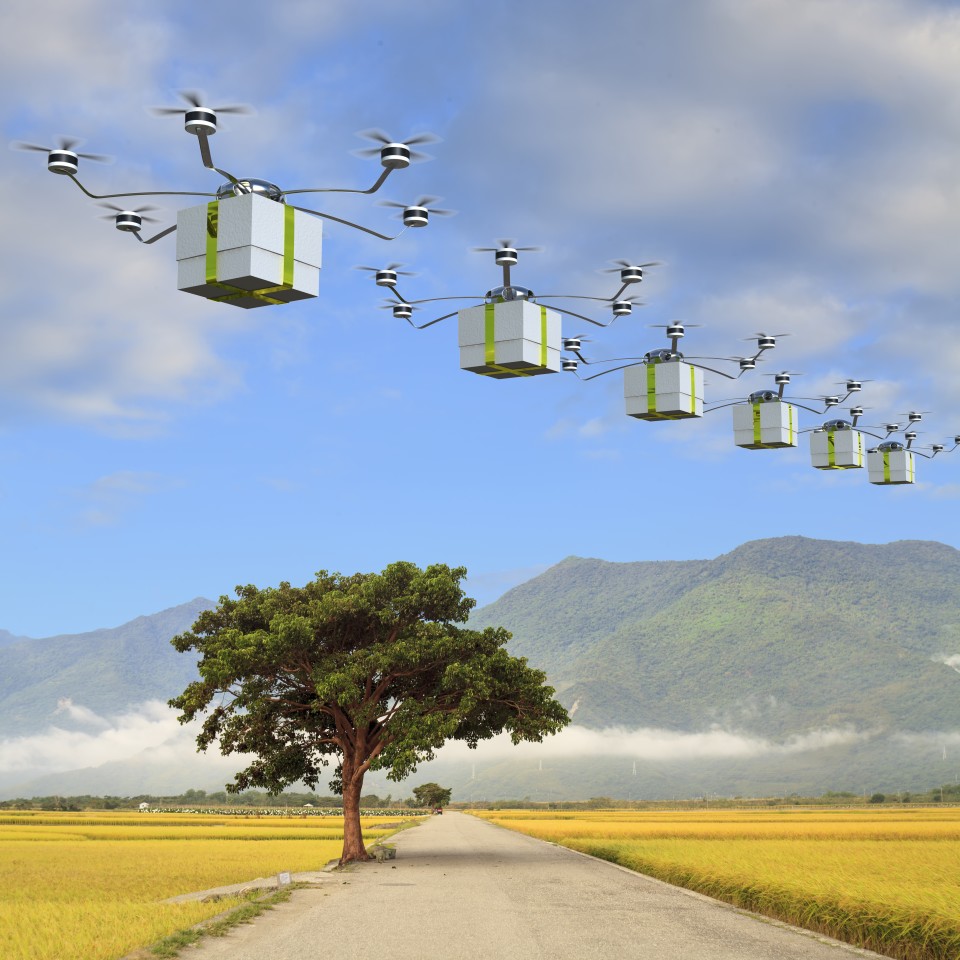
By Nick Lavars
Convenience, cost savings and efficiency are a few of the benefits offered up by proponents of a drone delivery future, but if these flying robots are to replace trucks on the ground what sort of impact would that have on the environment? A new study has set out to find some answers, and while widespread delivery drones do have the potential to reduce some carbon emissions, the answer isn’t exactly clear cut.
To weigh up the carbon emissions from delivery drones alongside those from trucks, researchers from the University of Washington (UW) first drew on earlier models for estimating truck emissions data, which had been used to estimate the environmental footprint of grocery store delivery services.
They then calculated the drone’s energy requirements, as watt-hours per mile, across 10 hypothetical scenarios representing different payload capacities and assuming they had to return to a central depot after dropping off each package. Their model incorporated 330 service zones in Los Angeles and up to 500 recipients in each zone.
According to their modelling, the drones do reduce carbon emissions but only when they don’t have to fly very far. For lighter packages such as medicine or bathing suits, for example, they also compete well. But as the package weight and in turn the energy requirements of the drone increased, the trucks started to win out.
“Flight is so much more energy-intensive — getting yourself airborne takes a huge amount of effort,” says senior author Anne Goodchild, a professor of civil and environmental engineering at UW. “So I initially thought there was no way drones could compete with trucks on carbon dioxide emissions. In the end, I was amazed at how energy-efficient drones are in some contexts. Trucks compete better on heavier loads, but for really light packages, drones are awesome.”
One of the environmental advantages trucks hold over drones is that they can carry huge loads in a single trip, everything form clothes to appliances to furniture. So if a delivery route has many stops or is far away from a central warehouse, then they become more environmentally friendly for that reason. If it is a short trip involving lighter loads or inadequate infrastructure, then a drone may be more suitable.
“Given what we found, probably the most realistic scenario is for drones doing the last leg of the delivery,” said Goodchild. “You’re probably not going to see these in downtown Seattle anytime soon. But maybe in a rural community with roads that are slow and hard for trucks to navigate and no air space or noise concerns.”
The team’s research was published in the journal Transportation Research Part D.